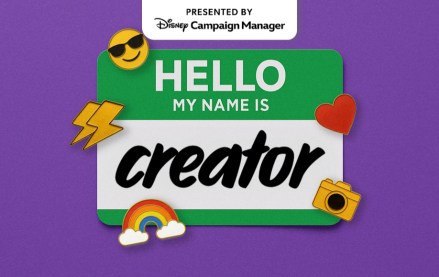Join us Oct. 15-17 in Phoenix to connect with top media buyers

While venture capital-backed BuzzFeed and Vice are chasing Hollywood with their scale and production values, non-VC-backed contenders like Gawker are taking things more slowly.
Gawker’s brand of snark and gossip has largely been confined to the written word. Now, like so many of its digital publishing rivals, the company is trying to figure out what its brands look like in front of the camera. That’s the idea behind Gawker Video, a dedicated a four-person video unit tasked with extending Gawker’s brand to video in an effort to draw in more viewers and advertisers. The Gawker Video mandate: be short, casual and “bullshit-free,” according to Gawker programming vp James Del.
The unit’s first official attempt was a snappy two-minute recap of the first four seasons of “Game of Thrones,” told with visuals and voice-over narration. The effort took three days to put together and ultimately grabbed 600,000 YouTube views since it was uploaded last week. Gawker, which is starting small, plans to both ramp up production and build its video unit to 10 people, who will work out of the dedicated studio it’s constructing in its new Flatiron office.
“Going slow makes a difference because we’re independent and self-funded,” said Gawker Media CEO Nick Denton. “We look at everything we do and determine if there’s money there and if it’s going to be profitable. Our strategy has tended to be driven not by fad but a pretty rational calculation of the cost and benefits.”
Gawker isn’t entirely new to video. Properties such as gaming-focused Kotaku and Lifehacker, its productivity blog, have led the company’s video charge over the last few years, albeit unofficially. Kotaku has focused on video game highlights, while Lifehacker has drawn readers with productivity tips. The efforts of both sites, however, suffered from an overall top-down strategy from Gawker itself, which says it’s now ready to give video a serious investment.
Denton said that video has become more feasible for Gawker as it has increased its reach, which has climbed to 49 million monthly unique visitors, according to comScore. Gawker has also seen more revenue potential with YouTube, which has become a viable distribution and monetization channel for the publishers that have posted to it. Focusing on YouTube — and perhaps even Facebook — for distribution also exposes Gawker’s videos far more reach than they would get if they were posted directly on Gawker’s own sites, making it a viable marketing channel as well.
The most heartening shift, though, is the money that’s flowing into video online. Digital video ad spending reached nearly $6 billion in the US in 2014, and is expected to surpass $7 billion in 2015, according to eMarketer. That has attracted a wide variety of players trying to pile in, including not only legacy media companies (Hearst, Conde Nast), but digital native-publishers as well (BuzzFeed, The Onion and Mashable).
The challenge, of course is differentiation. While an increasing number of publishers are jockeying for viewer eyeballs, their reach is limited by the finite amount of attention of Web users. This raises the stakes for publishers trying to build audiences.
“Roughly half of the Gawker audience also looks to BuzzFeed or Vox for content, so it’s critical for Gawker to differentiate by establishing a unique voice and avoiding the cookie-cutter distribution strategies,” said DigitasLBi associate media director Jenny Schauer. ”They certainly have an uphill battle ahead – but if they’re smart and purposeful about defining their position in the marketplace, they can still have a good chance.”
More challenging, however, might be finding the right brands to play along. Gawker, known for being edgy and unafraid to upset authority, could turn off more skittish brands as it pushes into video. Schauer said creating a scaled video play might mean focusing on the more brand-friendly properties such as Gizmodo, LifeHacker and io9, which could be more critical to Gawker Video’s success.
Gawker, for its part, is intent on finding the right formula, particularly when it comes to the balance between informing people and entertaining them.
“I believe that we can make videos that treat popular subjects without resorting to smarm, populist tropes, and cookie-cutter formats. We won’t pander to people’s baser instincts in the name of traffic,” said Gawker Video director Jesus Diaz.
More in Media

Media Briefing: From blocking to licensing, publishers inch toward leverage with AI
There are new levers for publishers to test in the AI era. While they’re still far from holding the upper hand, compared to a year ago, the outlook no longer looks quite so bleak.

Mitigating ‘Google risk’: The Independent maps four-pillar growth plan for the AI era
The Independent has built its growth strategy around the “blue links risk” and has stopped measuring its success by audience reach.

Advertising Week Briefing: Creators emerge as the industry’s new power brokers
Advertising Week has had creator-focused content tracks in past years, but the rising presence of content creators at this year’s event represents an evolution in how creators are engaging with advertisers, both at industry conferences like Advertising Week and in general.





